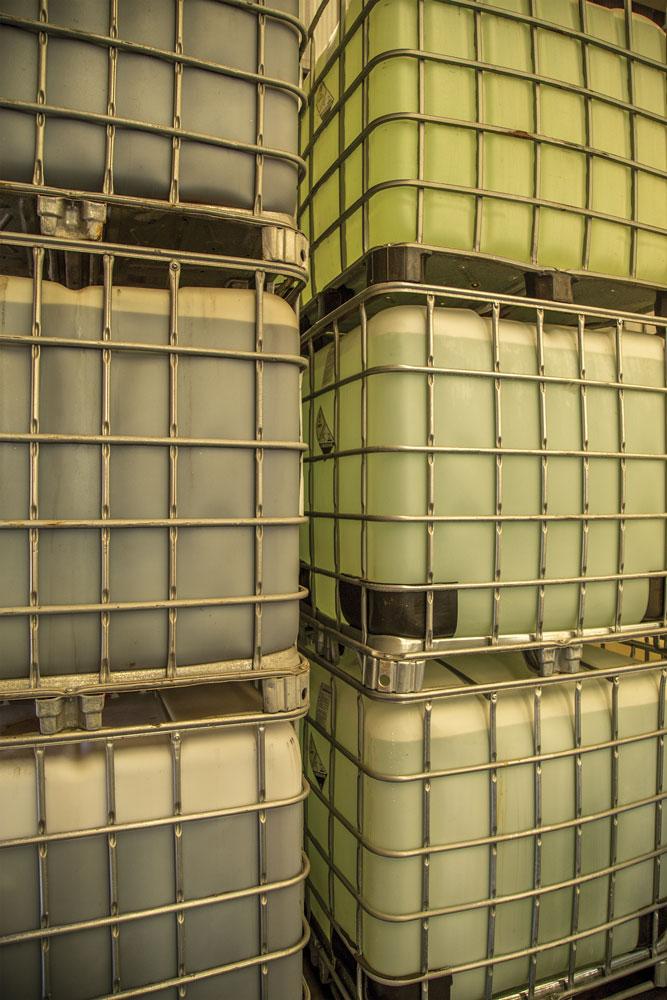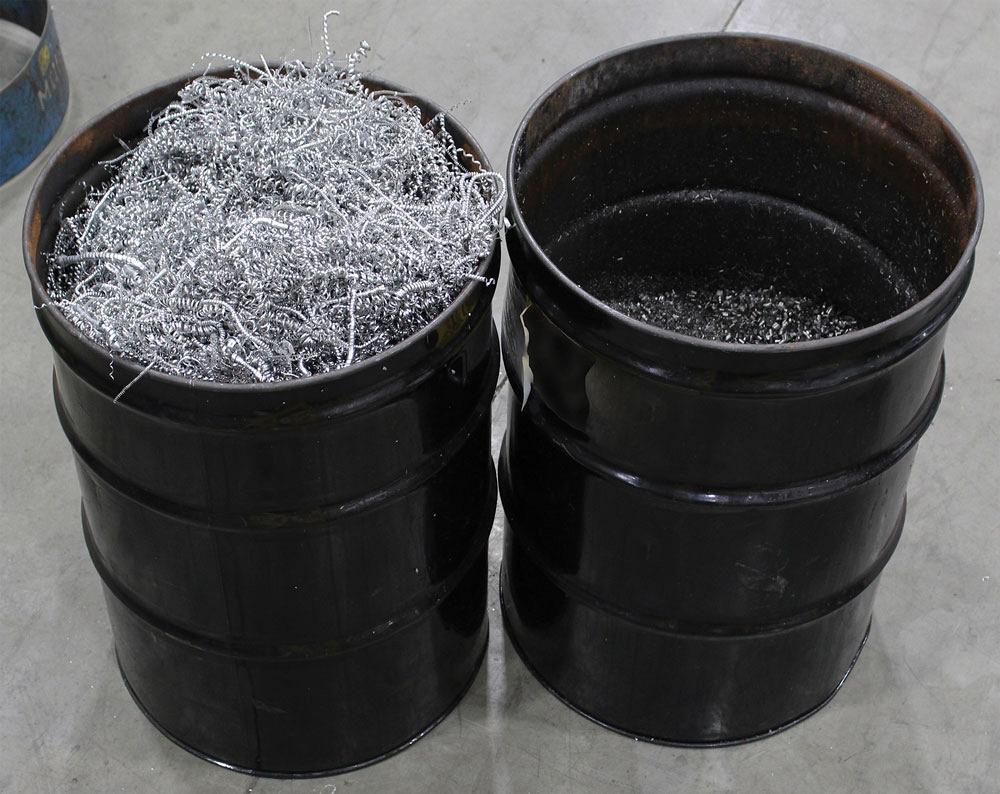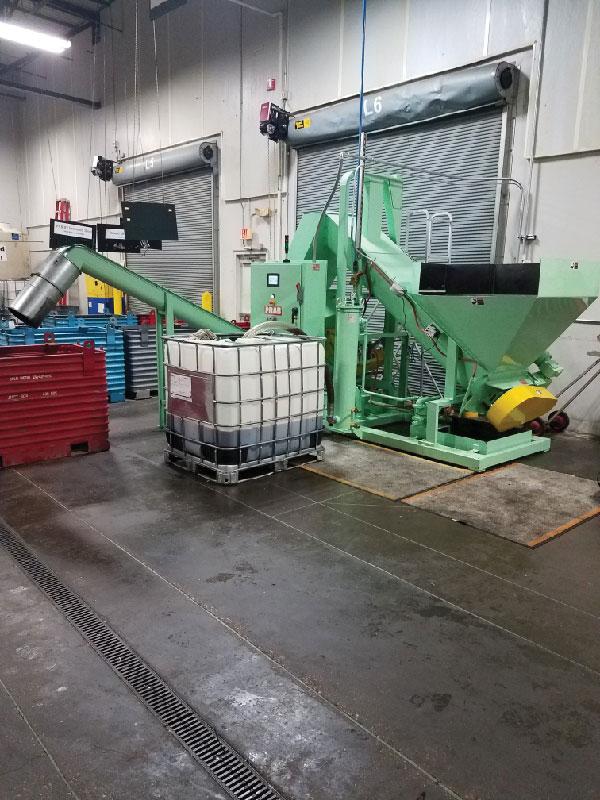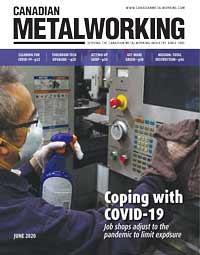Systems Sales Manager
- FMA
- The Fabricator
- FABTECH
- Canadian Metalworking
Design more profit into your metalworking operation
Get more green
- By Ron Chapman and Teresa Phillips
- June 26, 2020
- Article
- Metalworking

Metalworking operations can improve profitability and conserve resources by prolonging the life of tooling.
Being environmentally responsible, or green, has become an ever-growing concern worldwide.
However, many companies—including Canadian metalworking operations—are motivated to protect the Earth and conserve its natural resources by a stronger driver than just having an environmentally friendly reputation. That motivator is money.
Manufacturers are finding that by adopting a green philosophy and employing green-engineered equipment as a means to sustainable manufacturing, they are reaping significant financial gain.
Some examples of this philosophy include:
- Lean and clean programs to help with new and retained sales.
- A Profitable Sustainability Initiative (PSI) to reduce fuel consumption and emissions and reduce shipping costs.
- Projects to create energy savings.
Metalworking operations that consciously take steps like these to be good to the environment by using less energy, producing less scrap, and eliminating hazardous waste disposal also see financial rewards for being green by shifting to green-engineered equipment and processes centred on sustainable manufacturing.
While green manufacturing and sustainable manufacturing are not the same, they are closely related, and the terms are often used interchangeably. Green manufacturing refers more to a single product or production process, while sustainable manufacturing typically is associated with an organization’s holistic approach that takes the entire production process and logistics into consideration.
An April 2017 study published by the International Journal of Business and Social Science on green manufacturing and operational performance concluded that adopting green manufacturing practices has been proven to enhance operational performance.1
Companies pursue a green approach to sustainability for several reasons:
- Increase operational efficiency by reducing costs and waste.
- Respond to or reach new customers and increase competitive advantage.
- Protect and strengthen brand and reputation and build public trust.
- Build long-term business viability and success.
- Respond to regulatory constraints and opportunities.
Green engineering is the design, commercialization, and use of processes and products that minimize pollution, promote sustainability, and protect human health without sacrificing economic viability and efficiency.
Because of its many benefits, many international suppliers, including PRAB, engineer and build all of their systems with this green engineering philosophy.

Shops should find out how much it costs to haul away polluted metal scrap and used lubricants each month.
PRAB’s entire product line of metal scrap processing, fluid recycling, and wastewater treatment equipment is built to help manufacturers achieve their sustainability goals. They work with many industries within the metalworking sector to optimize operational performance by improving the management of their metal scrap and fluid waste streams, extending tool life, reducing new coolant purchases, and helping them to meet or exceed compliance to strict environmental rules and regulations.
Boosting the Bottom Line With Green Engineering
Here are four very important ways that metalworking operations can use green engineering to improve their environmental footprint and bottom lines:
1. Find the profit holes.
Before equipment suppliers specializing in green engineering can help metalworking operations save money, individual shops need to identify their profit drains.
One of the first areas to analyze—regardless of facility size—is the waste stream. With green-engineered equipment, this should be looked at as a revenue stream. Scrap metal, in most instances, represents the second-largest source of revenue for a metalworking operation.
With that said, shops should find out how much it costs to haul away polluted metal scrap and used lubricants each month. Then, a monthly report with housekeeping numbers should be run to determine how much time and labour are being spent on removing this metal waste, along with other maintenance and cleaning required in the current scrap and fluid management process. Next, they should quantify their monthly expenditures on new lubricants, cutting fluids, and metals.
2. Turn expenses into profit centers by reducing, reusing, and recycling.
When the metalworking operation knows its waste stream spending, it can solicit green-engineering equipment suppliers to provide it with an efficient and reliable profit-building option.
About 10 years ago most suppliers offered only centralized metal chip processing, fluid recycling, and underground conveyor systems for waste stream management. But that has changed in the past few years with the development of modular metal chip processing equipment and other turnkey systems, engineered for at-the-source (CNC or machining equipment) waste handling. With green-engineered technology, metalworking operations can:
- Reduce metal scrap volume. Shredders and crushers cut the volume of hazardous scrap by up to 12 times. Briquetters can turn wet chips into compact, 99 per cent dry briquettes that are no longer labeled hazardous, are easy to store, and often get more value when sold to the scrap dealer. By reducing scrap volumes, shops cut on-site storage costs and significantly lower the number of truckloads that are shipped to hazardous waste disposal sites.
- Separate metal scrap from fluid for reuse or recycling. Wringers/centrifuges and briquetters separate cutting fluids from metal chips. Operations then can reuse or recycle it. The extracted fluid then is recycled.
- Reclaim and filter fluids for improved profitability. Metal chip processing systems, such as wringers and briquetters, extract spent cutting fluids and route them to a centralized or machine-side fluid recycling system that filters and reclaims up to 98 per cent of coolant and automatically circulates it back into the process or into recycling containers. This process significantly reduces the need to purchase new oil or coolant. Some manufacturers have reported reductions in new fluid purchases of up to 75 per cent and fluid disposal costs up to approximately 90 per cent.
- Reduce energy consumption. Green-engineered equipment typically is designed for reduced energy consumption. For example, Eaton Corp., a global power management company, installed a new wastewater treatment system for its Fluid Power Division. Eaton experienced a drop in operating temperature of its washwater, which resulted in a 20 per cent reduction in energy usage.
Metalworking operations also can improve their profitability and conserve resources by prolonging the life of their tooling. Filtering fluid with the right recycling system has been proven to extend tool life by up to 25 per cent.
3. Proactively address threats of environmental fines.
Being green not only saves money with improved waste stream management, it can prevent hefty regulatory charges too.
In Canada, all three levels of government — municipal, provincial and territorial, and federal — contribute to environmental protection and play a role in managing hazardous waste and hazardous recyclable material.2
Ontario, for example, is pursuing a plan that will make shops responsible for the waste generated from their products and packaging to encourage new, innovative, and cost-effective ways to recycle products and lower costs for consumers. Under the plan, Ontario “will take strong enforcement action to ensure waste, including hazardous waste, is properly stored, transported, recycled, recovered, or disposed.”3
The Municipal Hazardous or Special Waste Program is scheduled to transition to the producer responsibility model on Dec. 31, 2020.4
Operators, maintenance, and other employees who may handle hazardous wastes are not always familiar with the monetary penalties for regulatory non-compliance. So when employees take shortcuts or don't follow hazardous waste handling procedures, they may not understand the financial repercussions.
That is why it’s advisable to inform employees during orientation and training of the financial impact environmental fines can have on the company and their jobs. Point out that non-compliance fines often increase with the amount of waste generated, and repeat offenders’ fines are even higher. Managers and supervisors also need to know the costs associated with tracking and doing paperwork related to hazardous waste stream management.
If there are pollution problems with the drainage of water coming from the business or leakage from containers filled with wet chips, there is another cost threat—the salability of the property. Business owners need to remember that proactive protection of their land and water can pay dividends in stable or increased property values. It can also help to avoid large cleanup and property rehabilitation costs and help maintain a good community reputation.
Incorporating green-engineered equipment into metalworking operations can alleviate these threats.
Conveyors, carts, and dumpers, for example, can help shops safely contain hazardous materials and prevent spillage and fluid leaks that can contaminate the ground and water. Horizontal screw presses can de-water hazardous grinding swarf or filter cake by up to 85 per cent, and the extracted fluids can be disposed of safely.
4. Evaluate if ISO 14000 certification will improve your green profitability.
As metalworking operations look for ways to increase their green profitability, ISO 14000 certification may provide a global foundation for improvements.
These internationally recognized environmental management standards and guidelines help companies comply with regulations, as well as reduce waste, improve process inefficiencies, and cut operational costs. Companies with ISO 14000 certification say that the guidelines keep them ready for regulatory inspections. But the certification can also improve their ability to get capital, lower insurance rates, simplify labelling, get permits, defend themselves in environmental litigation, and expand into global markets where the certification is requested or required.
Whether a Canadian manufacturer chooses to apply for ISO 14000 certification, use green-engineered equipment in its process, or both, the decision requires an investment. But that investment can often be recouped in just months from the reduction in waste handling costs and the prudent selling or reuse of what was once hazardous scrap metal and cutting fluid. Being able to add that return to the bottom line makes being green definitely worth it.
Ron Chapman is systems sales manager and Teresa Phillips is senior marketing specialist for PRAB, 5801 East N Ave., Kalamazoo, Mich. 49048, (877) 705-4561, www.prab.com.
Notes:
1. Selina M. Eshikumo and Stephen O. Odock, “Green Manufacturing and Operational Performance of a Firm: Case of Cement Manufacturing in Kenya,” International Journal of Business and Social Science,Vol. 8, No. 4, (April 2017), pp. 1–15, doi:10.33642/ijbass.
2. Government of Canada, “Management of hazardous waste and hazardous recyclable material,” www.canada.ca/en/environment-climate-change/services/managing-reducing-waste/permit-hazardous-wastes-recyclables/management.html.
3. Minister of the Environment, Conservation and Parks, “Preserving and Protecting our Environments for Future Generations: A Made-in-Ontario Environment Plan,” https://prod-environmental-registry.s3.amazonaws.com/2018-11/EnvironmentPlan.pdf.
4. Ontario, “Hazardous waste management: business and industry,” www.ontario.ca/page/hazardous-waste-management-business-and-industry.
About the Authors
Related Companies
subscribe now


Keep up to date with the latest news, events, and technology for all things metal from our pair of monthly magazines written specifically for Canadian manufacturers!
Start Your Free Subscription- Industry Events
MME Winnipeg
- April 30, 2024
- Winnipeg, ON Canada
CTMA Economic Uncertainty: Helping You Navigate Windsor Seminar
- April 30, 2024
- Windsor, ON Canada
CTMA Economic Uncertainty: Helping You Navigate Kitchener Seminar
- May 2, 2024
- Kitchener, ON Canada
Automate 2024
- May 6 - 9, 2024
- Chicago, IL
ANCA Open House
- May 7 - 8, 2024
- Wixom, MI























